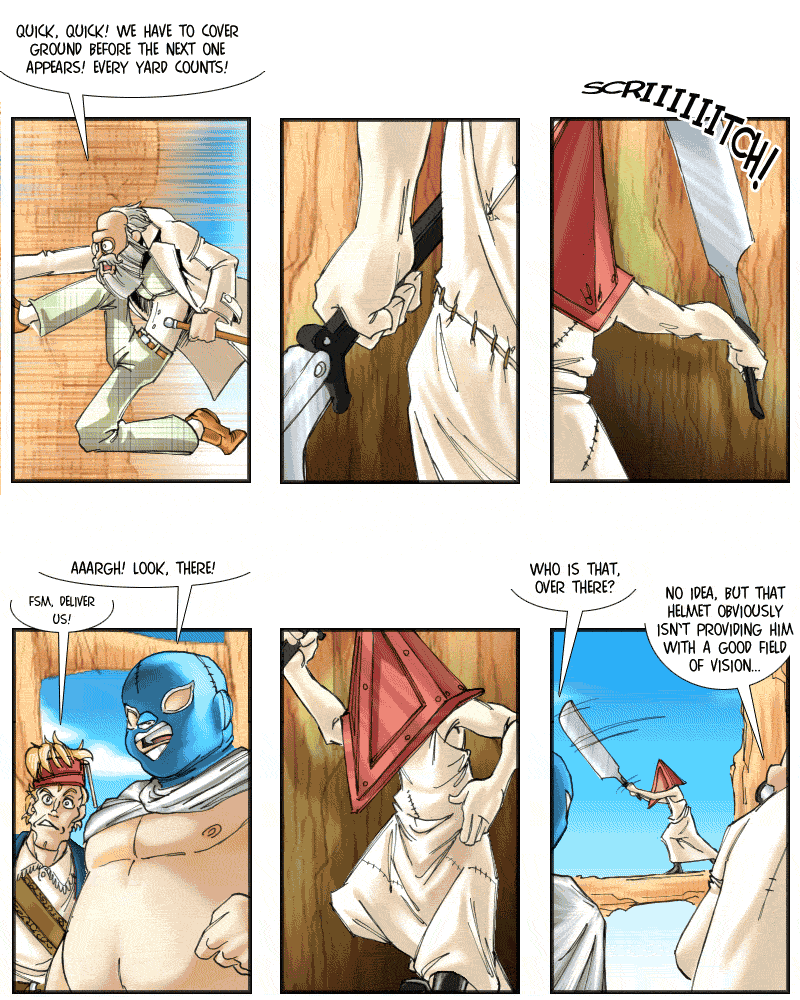

Despite being a little bit stuck right now, our villain seems to have managed to loosen one of his very few remaining henchmen on our heroes…who, unfortunately, continues a trend of somewhat sub-optimal return on his wages. (This is another older/earlier strip from the first draft of the chapter, but I liked the animation effect too much to ditch it.)
Mask (and that’s what Pyramidhead’s helmet ultimately is) are another staple of B-movies, and of fantasy/horror fiction in general. In real life, the main allure of a mask lies in the anonimity it confers, thus enabling the wearer to emancipate themselves from some of the restricitions society places on them – unsurprisingly, the more restrictive a society is, the more important masks tend to be, and the more regulated will be the occasions when they can be worn.
In fiction, the first and foremost application of masks is a strictly functional one: they can serve to hide a character’s identity. In this case, the demasking does not reveal anything about what a character is, but only who they are – or who they were, since sometimes, especially in crime fiction, the demasking will take place only after a character’s demise (In the case the character survives to the demasking, they can then offer the standard “…and I would have succeeded, if it wasn’t for those meddling teenagers.”). In classic crime fiction, the demasking was often a crucial element – and often rather theatrical, too, as the detective hero had to desmask the (incapacitated) villain to reveal their identity to the other characters and the audience, while at the same time revealing that they, themselves, had already figured out the villain’s identity beforehand.
In horror fiction, there is another variant of masked character, however: the masked monster. They come in two distinct flavors: The older ones, let’s call them Phantoms of the Operas, were monsters by nature and wore masks to hide that fact. Their demasking was (supposed to be) a horrifying moment, as they turned out to be more horrible looking than the audience could have expected (didn’t always work, of course). In the original “Phantom of the Opera” novel, there is only one scene where Erik, the Opera Ghost, can mingle with the general populace unmasked without causing alarm – during the masked ball, when he can pass his actual face off as a horrific mask.
The newer type of masked monsters, let’s call them Darth Vaders, is almost the opposite – they are human by nature, and it is their mask that turns them into something monstrous. They dare to be monstrous only as long as their identity is hidden, and their demasking is often anti-climatic, with them being revealed as pityful and pathetic beneath their assumed fearsomeness.
And, finally, there’s a usage of masks that is restricted to only B-grade fiction: the use of a simple latex mask to completey and convincingly assume the appearance of a different person, to the point where friends and family members can’t tell the difference. That one almost amounts to a fairy tale. =P
Well, more on Thursday. A new voting incentive is up, as well.